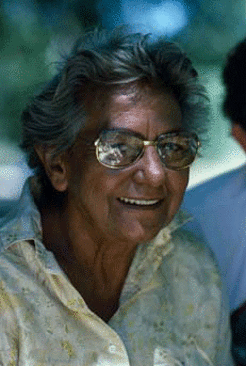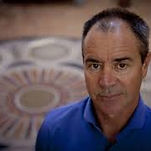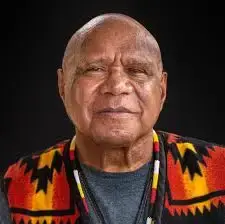

'The Poetics of Deep Mapping Place'
Colebrook Reconciliation Park
Black Poetics: Indigenous Literary Studies Student Project

Acknowledgment
I acknowledge the traditional owners of country throughout Australia and their continuing connection to land, culture and community. I pay my respects to elders past, present and emerging.
Sensitivity Disclaimer
Aboriginal and Torres Strait Islander people should be aware that this website page contains images, voices, or names of deceased persons in photographs, film or audio recordings.
Page only accessible on desktops (no mobile version available)

Transformation and Reconciliation
Colebrook Reconciliation Park is a moving example of healing, memory, and reconciliation. It is tucked away in the peaceful Eden Hills, South Australia. Originally the location of the Colebrook Children's Home, this park now acts as a permanent memorial for the families and Aboriginal children who suffered from the terrible legacy of the Stolen Generation.
Reflecting on Australian Indigenous Knowledges and Stories
We delve into the layered narratives that shape this place, drawing inspiration from Indigenous writers and poets. Our exploration is guided by key concepts such as decolonization, relationality, and literary sovereignty.


%202.jpeg)
%203.jpeg)
The Living History of Blackwood
Blackwood, a suburb in Adelaide’s foothills, carries within its soil the echoes of time. Its colonial history intertwines with the ancient stories of the Kaurna people, who have inhabited this land for millennia. As we walk through the streets, we encounter remnants of the past—a weathered stone wall, a gnarled gum tree, a creek that once flowed freely. These physical markers hold memories, both painful and resilient.
Indigenous Writers as Custodians of Memory
To centre our reflections, we turn to Indigenous writers and poets who have breathed life into the landscape. Oodgeroo Noonuccal, a trailblazing poet and activist, reminds us that “We Are Going.” Her words resonate with the tension between erasure and survival—the erasure of Indigenous culture and the resilience that persists despite it. Through her poetry, Noonuccal invites us to listen to the land, to hear its stories whispered through the rustling leaves.

The Power of Narrative and Story
Narratives shape our understanding of place. Colebrook Reconciliation Park seeks to amplify silenced voices, weaving together stories of dispossession, resistance, and healing. Kim Scott, a Noongar writer, speaks of “That Deadman Dance,” where Indigenous and settler cultures collide. His novel invites us to dance across time, bridging the gap between past and present. Scott’s prose becomes a vessel for memory, carrying us through the ages.

 |  |
|---|---|
 |  |
 |  |
 |
Deep Mapping and Unseen Layers
A reflective deep mapping reveals hidden layers—the footprints of ancestors, the whispers of ceremonies, the scars of conflict. We explore the creek’s course, tracing its bends and meanders. Beneath the asphalt, we sense the old foundations, its story etched into the bedrock. We honour the marginalised narratives — the children who played by the creek. Children deeply affected by forced removals and institutionalisation, suffering immense trauma, severed from their cultural roots, language, and kinship networks.
It reminds us that healing requires acknowledging the past, listening to Indigenous voices, and working together toward a more just and inclusive society.


To deep map is to sit with country, to imagine beyond what we know. We trace the contours of Blackwood, where stories intertwine with colonial history. Colebrook Reconciliation Park stands as witness, grappling with the living memory of a place shaped by both Indigenous knowledge and coloniality. Here, stories become memorialized or erased, etched into the land like hidden scars.
Memory in the Blood: (Re)Mapping Archives
“It is the fever in the archive after all, the same fever that drives the hoarding (the holding) which might drive an attempt to touch something of the event.” — Natalie Harkin
Decolonization and Literary Sovereignty
Decolonization is not a one-time event; it is an ongoing process. Colebrook Reconciliation Park dismantles colonial frameworks, inviting Indigenous voices to reclaim their stories. Ali Cobby Eckermann, a Yankunytjatjara/Kokatha poet, embodies this sovereignty. Her collection “Inside My Mother” unearths intergenerational trauma, weaving threads of resilience and healing. Eckermann’s words are medicine for a wounded landscape.

After prayers at night I go to bed
lying awake with memories in my head.
I can still see my mother
kneeling on the ground
sobbing, Don't take my child,
I want him around.
Alf Taylor,
'Rimfire: Poetry from Aboriginal Australia'

Relationality and Writing for Transformation
As we engage with the land, we forge relationships—with the river red gums, the magpies, the granite outcrops. Tony Birch, a Bundjalung writer, reminds us that writing is an act of transformation. His stories breathe life into forgotten corners, inviting us to reimagine our place within the ecosystem. Birch’s prose becomes a bridge, connecting us to the ancestral stories that linger in the breeze.

Poetics of Resistance and Refusal
In the face of erasure, Indigenous poets wield their pens as weapons of resistance. Lionel Fogarty, a Murri poet, defies colonial constraints. His words surge like a river in flood, refusing to be contained. Through his poetry, we confront uncomfortable truths—the violence of dispossession, the resilience of kinship. Fogarty’s refusal to be silenced echoes across the hills, challenging us to listen.

Inscriptions for the Future
As we conclude our reflection, we inscribe our intentions onto the land. We commit to amplifying Indigenous voices, to weaving their stories into the fabric of Blackwood. The foundations, once hidden, now settled in our collective memory. Colebrook Reconciliation Park becomes a vessel—a place where history, story, and Indigenous knowledge converge. We honour the past, celebrate the present, and inscribe hope for generations yet unborn.



The Alchemy of Words



Our pens transmute pain into possibility. We write futures—where Colebrook’s foundations once stood, where Kaurna language dances, where children learn truth-telling. We read the land — the scars, the blossoms — and write ourselves into its folds. We refuse erasure. Our poems are barricades against forgetting. We chant: “Remember, remember!” Our ink is a shield, our metaphors weapons. We resist the amnesia of asphalt and shopping malls. Colebrook's roots pierce concrete.
As the sun dips below the ridge, I fold my map — a palimpsest of ink and longing. Colebrook whispers its stories — the hidden, the marginalized, the resilient. Our deep mapping inscribes hope — a future where memory blooms, where Country sings, and where justice unfurls like wattle blossoms.
Colebrook Reconciliation Park
Exploring the Park
%201.jpeg)
Grieving Mother
The bowed head and the hollow arms of a mother express the sentiment, "Where has my baby gone?" This is a sculpture of a grieving mother created by artist Silvio Apponyi. These emotional words convey the agony of separation. The mother silently suffers, much like the children and their families did for many years.

Colebrook Children's Home
The Colebrook Children's Home in South Australia was part of the Stolen Generations, a period from the late 1800s to the 1970s when Indigenous children were taken from their families to assimilate into European culture, causing devastating consequences like severed family ties and trauma that continues to affect generations.

Children's Mosiac
Local Aboriginal artist Kunyi June-Anne McInerney designed and crafted the mosaic. In addition to spending time at the Oodnadatta mission home, Kunyi's sisters were also residents of Colebrook Children's Home. The children and local fauna that were present at Colebrook, as well as the games the children played, are all portrayed in the mosaic.

Listening Posts
The listening posts at Colebrook Reconciliation Park have been adorned by local Kaurna, Narangga, and Ngarrindjeri artist Carly Tarkari Dodd, with the help of children from nearby schools and preschools. These posts feature personal recordings of Aboriginal individuals who once lived at the home, and the stories are regularly refreshed.
.jpeg)
Fountain of Tears
At the heart is the Fountain of Tears, a powerful sculpture symbolising the collective grief and loss of the Stolen Generation. The gentle flow of water represents healing and renewal. Created by artists Silvio Apponyi and Shereen Rankine, water is used to acknowledge the pain, trauma, and sorrow of those affected by the removal of children.

Story Board
This area displays the book "Bush Games and Knucklebones," written by Doris Kartinyeri and illustrated by Kunyi June-Anne McInerney. The story takes us on a lighthearted yet poignant journey inside the Stolen Generation children's imaginations and the games they devised to deal with the hardships of institutionalisation.



Reconciliation
Colebrook Reconciliation Park invites us to confront uncomfortable truths, honour the resilience of the Stolen Generation, and commit to reconciliation. As we walk its paths, we remember the children who suffered and strive for a more compassionate and just society—one that acknowledges the pain of the past while building bridges toward a shared future.


Acknowledgments
Abbey, S. (2017). Biography - Oodgeroo Noonuccal - Indigenous Australia. Ia.anu.edu.au. https://ia.anu.edu.au/biography/noonuccal-oodgeroo-18057
Austlit. (n.d.). AustLit: Discover Australian Stories. Www.austlit.edu.au. https://www.austlit.edu.au/
australia247.info. (2019, March 24). Colebrook Reconciliation Park - Eden Hills SA 5050, Australia. Www.australia247.Info. https://www.australia247.info/explore/south_australia/city_of_mitcham/eden_hills/colebrook_reconciliation_park.html
EMILY KIM, JASMINE TRAN, HANNAH LEONG, CONNIE OU, SARAH LU, & CONNIE LUO. (n.d.). the Stolen Generation. Nsghistorymuseum.weebly.com; ABORIGINAL HISTORY MUSEUM. https://nsghistorymuseum.weebly.com/the-stolen-generation.html
Fremantle Press. (n.d.). Kim Scott. Fremantle Press. Retrieved June 3, 2024, from https://fremantlepress.com.au/contributor/kim-scott/
Indigenous Australia. (2024). Biography - Jack Davis - Indigenous Australia. Ia.anu.edu.au. https://ia.anu.edu.au/biography/davis-jack-17788
Laslett, D. (2024). » MONA OLSSON & THE FOUTNAIN OF TEARS. https://davelaslett.com/mona-olsson-the-foutnain-of-tears/
Marsh, B. (2020). LibGuides: 12 No Sugar: Related Poetry. Arc.servite.wa.edu.au. https://arc.servite.wa.edu.au/c.php?g=848697&p=6070415
Mascara Poetry Inc. (2023, July 31). In memory of Alf Taylor. Mascara Literary Review. https://www.mascarareview.com/in-memory-of-alf-taylor/
Mitcham, C. of. (2019, May 24). Places to visit. City of Mitcham. https://www.mitchamcouncil.sa.gov.au/Learn-and-explore/places-to-visit
National Library of Australia. (2024). Aborigines Act 1897. Trove. https://nla.gov.au/nla.obj-55208678/view?partId=nla.obj-55208953#page/n1/mode/1up
Pan Macmillan Australia. (2010, September 13). That Deadman Dance by Kim Scott. YouTube. https://www.youtube.com/watch?v=xqY8v1l9Pls
PoemHunter.com. (2013, October 17). “Stolen Generation” - “Stolen Generation” Poem by Grapie Lin. Poem Hunter. https://www.poemhunter.com/poem/stolen-generation/
Red Room Poetry. (2010, April 26). Oodgeroo Noonuccal. Www.youtube.com. https://www.youtube.com/watch?v=oF5PxEnkgiI
Writing WA. (2023, August 1). Farewell Alf Taylor (18/11/1945 – 29/7/2023). Writing WA. https://www.writingwa.org/news/farewell-alf-taylor/
Wix.com, Inc. (2016, April 14). Free Images, Video & Other Media For Your Website. Wix Blog. https://www.wix.com/blog/images-video-more-all-the-free-media-available-in-the-wix-editor
Zetl, R. R. P. A. 35 103 464 446 J. A. C. C. 3A J. A., & redroompoetry.org, N. 2017 A. P. 02 9319 5090. (2024a). Ali Cobby Eckermann. Red Room Poetry. https://redroompoetry.org/poets/ali-cobby-eckermann/
Zetl, R. R. P. A. 35 103 464 446 J. A. C. C. 3A J. A., & redroompoetry.org, N. 2017 A. P. 02 9319 5090. (2024b). Home. Red Room Poetry. https://redroompoetry.org/
Zetl, R. R. P. A. 35 103 464 446 J. A. C. C. 3A J. A., & redroompoetry.org, N. 2017 A. P. 02 9319 5090. (2024c). Lionel Fogarty. Red Room Poetry. https://redroompoetry.org/poets/lionel-fogarty/
Zetland, R. R. P. A. 35 103 464 446 J. A. C. C. 3A J. A., & redroompoetry.org, N. 2017 A. P. 02 9319 5090. (2024a). Natalie Harkin. Red Room Poetry. https://redroompoetry.org/poets/natalie-harkin/
Zetland, R. R. P. A. 35 103 464 446 J. A. C. C. 3A J. A., & redroompoetry.org, N. 2017 A. P. 1800 P. (2024b). Cradle of Life. Red Room Poetry. https://redroompoetry.org/poets/archie-roach/cradle-of-life/
Zetland, R. R. P. A. 35 103 464 446 J. A. C. C. 3A J. A., & redroompoetry.org, N. 2017 A. P. 1800 P. (2024c). Tony Birch. Red Room Poetry. https://redroompoetry.org/poets/tony-birch/





































